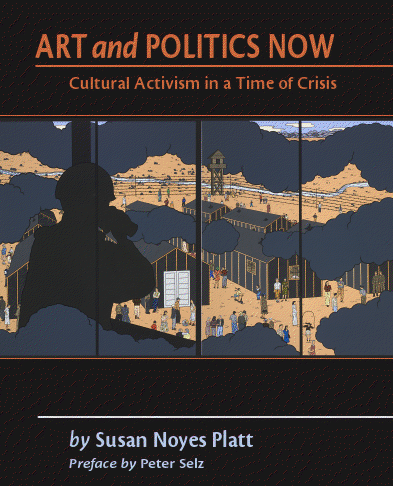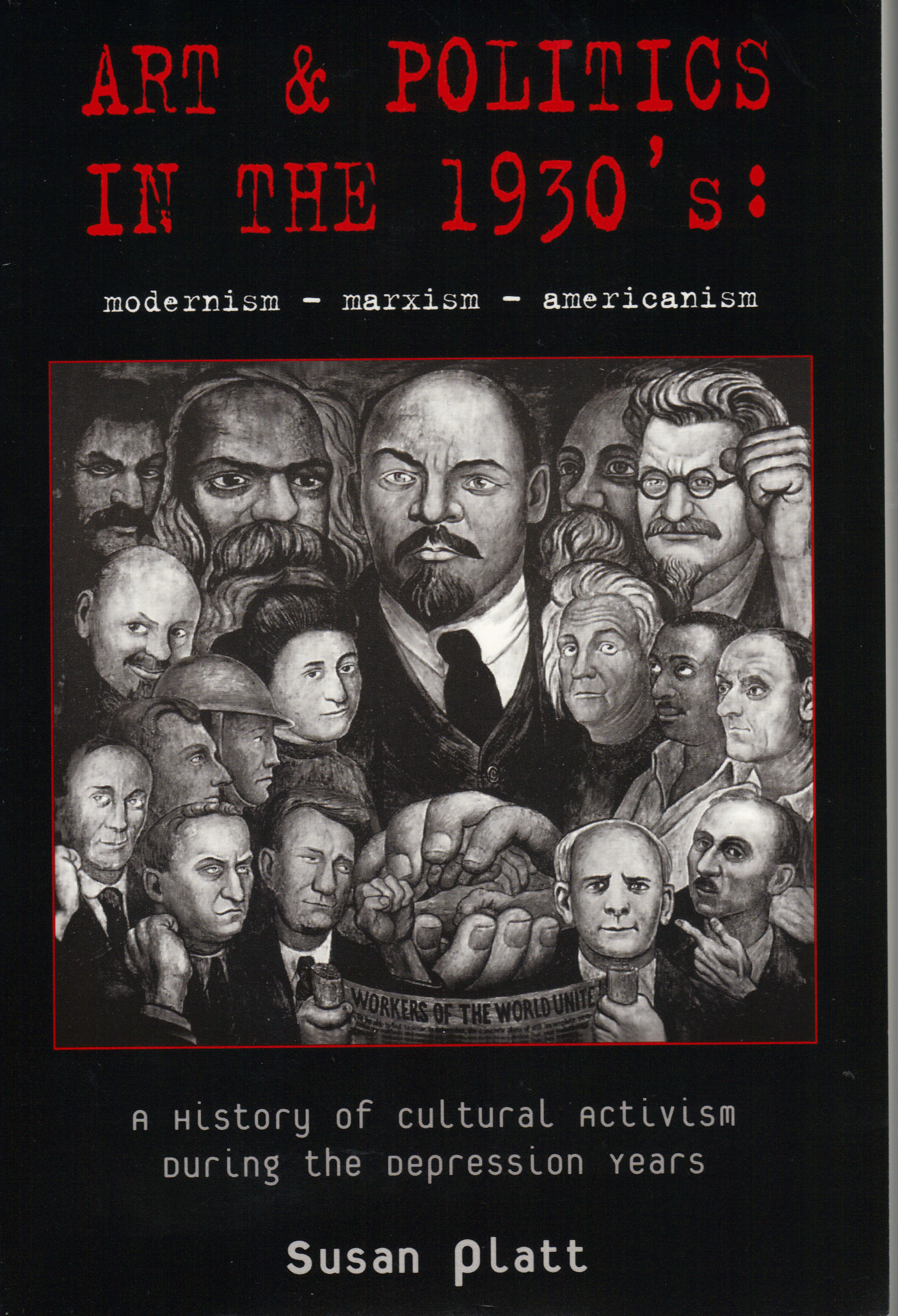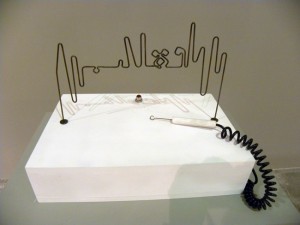

The 12th Istanbul Biennial, curated by Jens Hoffman and Adriana Pedrosa offered art that created intersections of aesthetics and politics, both historically and in contemporary art. The curators chose to distance the exhibition from immediate political reality, but the same issues such as pursuit of oil in the Middle East, government oppression and loss of human rights, have been with us for decades. The geo political framework of the exhibition spans most of the twentieth century and the early 21st century. One of the earlier bodies of work is by Tina Modotti, an ardent communist who supported workers’ revolutions in Mexico in the 1920s. She is represented by photographs in the scale, but not the context of her original work: it often appeared on the cover of New Masses. Martha Rosler’s Bringing the War Home: House Beautiful series on the Vietnam War ( rather than her Iraq series of 2004), underscores that obliviousness to the atrocities of war has not changed.
The curators chose to call this biennial Untitled (12th Istanbul Biennial) in homage to Felix Gonzalez-Torres (1957 – 1996), whom they celebrate for his ability to “infuse” the elegance of post Minimalism with political statements. The early 1990s was of course the height of the AIDS crisis and many artists were rejecting the abstruse for direct political statements. In this Biennial works by Gonzalez-Torres create a point of departure for group shows (although his works are only referenced in the catalog): Untitled(Abstraction), Untitled (History), Untitled (Ross), Untitled (Death by Gun), Untitled (Passport). Surrounding these group shows were over fifty solo shows by artists who connected to the adjacent theme show. The design of the exhibition by architect Ryue Nishizawa enhanced this sense of satellites revolving around a central galaxy, with individual gallery spaces defined by corrugated metal walls for each solo artist, But the installation was also a maze.
This was an intentional act on the part of the curators and the architect: they referred to it as echoing the experience of walking the streets of Istanbul. The result was a sense that we could make our own show. We were free to ignore, or return, there were empty spaces between the gallery spaces, there were rooms that led us nowhere or back in a circle.
The first solo show that I encountered, Cultural Diplomacy: An Art We Neglect by Alessandro Balteo Yazbeck and Media Farzin made clear the curators’ intentions and perspectives. It consisted of a contexualization of early 1940s modernism, most specifically the 1943 mobiles of Alexander Calder which he himself described in terms of “cosmic nuclear gases.”
The artists recreate the work, and also alter the original in a photograph by writing on the abstract shapes the names of world leaders who at that time were juggling for influence: Hitler, Stalin, Roosevelt, Truman, Churchill, etc.. They also provide contextual events in 1943 such as the beginning of the Manhattan Project.
The rest of the gallery is filled with other examples that contexualize modernist art with other historical benchmarks and the simultaneous U.S. pursuit of oil and “cultural diplomacy” in the Middle East such as excerpts from Longines Chronoscope of the early 1950s, with experts expounding in much the same way that they do today, diagrams of the oil fields on Iran and Iraq from the Cheney Energy Task Force( whose shapes reminded the artists of a Calder mobile), and a 2006 article by Seymour Hersh in the New Yorker “The Iran Plans.” Nothing has changed in the US perspectives, but as Z magazine stated recently “As the Arab Spring continues to challenge dictators, demolish old structures and ponder road maps for a better future, the U.S. remains committed to its failed policies, misconceptions, and selfish interests.” (Ramzy Baroud, “U.S.-Arab Disconnect: Revolutions Restate Region’s Priorities,”) October 2011
The group exhibition Untitled (Abstraction) was the least provocative in terms of art and politics. Historic figures like Lygia Clark and Lygia Pape were juxtaposed to recent artists who frequently did riffs on familiar works such as the shovel ready -made by Duchamp. Clara Ianni’s Trabalho Abstrato (Abstract Work/Labor, 2010 was a shovel with a square hole cut into it, thus rendering it useless and a play on the Marx idea of “abstract labor.”
Adriana Varejao transformed abstract slashes inspired by Lucio Fontana into a depiction of literal wounds.
But among the solo shows affiliated with the abstract section , the work of Dora Maurer, an Hungarian artist who began to create conceptual art in the early 1970s in the midst of oppression and communism, again provides the contradiction of context and production that can be so provocative. Her subtle conceptual pieces were an active protest against the world in which she was living ( she is still a major contemporary artist in Hungary.)
The Untitled (Death by Gun) group show swung between absolutely literal representations to historical images that did not gain by their loss of context. Some artists recreated intense experiences of the past, as in the video work by Edgardo Aragon who hired his young cousins to re-enact rituals, games and killings that actually happened in his family when they were involved with organized crime. Mat Collishaw’s giant photograph of a bullet wound was so confrontational that it became sexual and abstract. This installation included iconic historic images like “Matthew Brady’s” ( done by various members of his studio)photographs of the Civil War. It juxtaposed the photograph by Eddie Adams of a street execution of a Viet Cong fighter with the equally well- known image of Chris Burden being shot as an art performance. What does this tell us? That the art world is effete, or that this shooting was part of the pervasive gun culture of this time that continues to the present.
Even the contemporary work had historical references: Kris Martin’s Obussen II, used huge ornately decorated howitzer shells from World War I, and Kristen Morgin’s The Third Of May, reenacted the famous Goya using clay models of Pinocchio and Mickey Mouse as victims of the firing squad.
Are the curators avoiding the realities of death by gun in the present? With the choice of Ali Younis with his hundreds of toy soldiers,
or Eylem Aladogan’s gun stack that morphs into feathers,
they opted for the literal, but it feels like a mannerist literal. Even more literal and yet more than that are the photographs of Letiizia Battaglia done while she was working as a photojournalist in Sicily in the mid 1970s: the dead victims of Mafia hit men are unmediated and blunt. There is a direct connection between these Mafiosi murders and the targeted murders coming from camera phones in Afghanistan and Iraq or the unphotographed murder of unarmed “enemies” like Osama Bin Laden and Anwar al-Alwaki by drones.
Situated between the stark dialectic of Untitled (Abstraction) and Untitled (Death by Gun), lie the three other group shows: Untitled (Passport) Untitled (History) and Untitled (Ross) –the third name refers to Gonzalez-Torres’ lover who died of AIDS. This section addressed themes of love, identity and sexuality and was the most historically focused and least provocative in terms of contemporary choices of work.
Untitled (Passport) lent itself to more subtle negotiations between aesthetics and politics. Several artists included resonant passports: Sue Williamson’s For Thirty Years Next to His Heart (1990) was a passbook for black South Africans; two Palestinian artists Dor Guez and Baha Boukhari referred to the constantly changing status of Palestinians.
Rula Halawani’s Intimacy, are close up images of people’s hands as they get out their documents at a checkpoint at the Qalandia checkpoint between Jerusalem and Ramallah ( Halawani’s black and white photographs in the “history” gallery juxtaposes contemporary ruins to historic photographs of villages in Palestine.)
Untitled (History) included Aydan Murtezaoglu’s well known work referencing Ataturk’s teaching Turks the Roman alphabet in the late 1920s as part of his language reform, as well as many works that utilized archives, books, and other documents to underscore the incompleteness and arbitrariness of what is included in history.
Some seemed a bit pedantic, others more compelling such as PAGES reconstituted a shredded letter from an American diplomat at the Iranian embassy just before the student take over. Volupsa Jarpa Library of No History based on declassified CIA documents referrng to Chile between 1968 – 1991 was mainly an unreadable aesthetic.
There was again an emphasis on the aesthetics of the printed page, the redacted printed page, the shredded book, the book turned into artwork.
Altogether the exhibition was elegant and provocative, as with all biennials, there were artists included that were astonishingly weak,. The unusual choice to emphasize historical work to such a great extent, as well as an obvious predominance of Palestinian artists (The Ford Foundation provided funding to include Arab artists) and an almost absence of American artists ( a cut in the US budget?) also points to other hidden political agendas that are not even mentioned in the exhibition, but which certainly framed it.
I had some favorite pieces including Taysir Batniji’s Watchtowers, Israeli guard towers in Palestine that directly quote the industrial imagery of Bernd and Hilla Becher in Germany, but with obvious differences: these photographs were taken by a surrogate photographer in a hurry, they are illegal images, and they are not derelict at all.
Rosangelo Renno’s Immemorial also invokes modernism in its grid structure, but that impersonal geometry is abruptly interrupted by the faces of young men in a series of photographs that Renno found in archives: they are young men who died building Brasilia.
Underlying tragedy is more indirectly invoked in the Camilo Yanez video of the National Stadium in Santiago, site of both heroic and horrific events . We see rolled up cubes of grass and crumbling seats as the history of the place disappears. Simryn Gill’s series My Own Private Anghor, also documents the collapse of modernism in hauntingly post minimalist photographs of abandoned window panes in empty unfinished houses in Kuala Lumpur. Abraham Cruz Villegas collection of political posters from various intense events in Mexican history and Elizabeth Catlett ( who is still working, but whose aesthetic was shaped in the 1930’s and 1940’s) also look backward to a time when artists directly engaged events.
While continuity with the present can be argued throughout this exhibition, its emphasis on both the literal and the abstractions of historical modernism, particularly conceptual and minimalist structures created a strange dynamic between the current burning state of the planet and the place of art in that discourse. Artists can engage directly with what is happening now, but in choosing this historical and aesthetic route, these curators suggest that the examples that have withstood the test of time can speak to us almost more directly, than a piece responding to the immediate event.
And, indeed, this split of the literal and the abstract is actually where we are now. On the one hand, drone warfare replaces human beings on the ground. The computer screen replaces the equipment in the field, the concept of war itself has become abstracted into perpetual war on terror. The defined wars of the past, with their titles, places, historical beginning and end, are definitely a relic of the black side of modernism. Today we have permanent war, word play, no social participation in the idea of sacrifice for a war, all of it making for a permanent abstract background to our daily lives, a background that many people don’t even bother to acknowledge as the single biggest fact of our contemporary world. This biennial is a bit like that: it includes a lot of abstraction that is post minimal framed with political discourses, but in the end, the world of politics is background to the elegance of the works, and is often even invisible. On the other hand, we have the extremely literal and specific protests occurring around the world by masses of people who have nothing more to lose.

Homayoum Askari Sirizi "They(masses) absorb all the electricity of the social and political and neutralize it" (After Baudrillard)
This exhibition offers a new variant on the theme of art and politics. Some critics and the curators themselves are saying that it is a reaction to the more specific art and politics of the last three Istanbul Biennials. They are trying to move the equation closer to aesthetics, which in their definition is late modernism.
That may explain the pervasive sadness that I felt. For in reaching for modernist aesthetics, they are reaching for a lost cause, a failed project, a twentieth century dream. Today, we need something entirely different, and that is actually being formed on social media, with mass connections of disenfranchised and economically bankrupted youth, workers, unionists and with protests like those in Wisconsin or in New York City. Occupy Wall Street protests against the dictatorship of the corporations; protests in Egypt and elsewhere in the Middle East are against ruthless political dictators often backed by the US. So against the abstraction of drones and warfare we have the physical messy, open, people based multi media, multi issue protest against oppression and the economic systems of exploitation and war that drive it. That is the contemporary dialectic of art and politics. Where it leads us is still to be discovered.